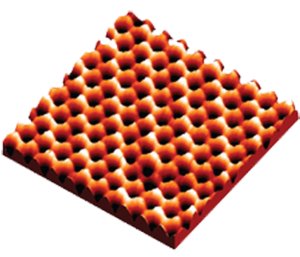The  rise of graphene has triggered many scientists to search for other two-dimensional ‘Dirac’ materials. The most attractive candidates can be found in the ‘carbon’ column of the periodic system, i.e. silicon, germanium and tin. Silicon, germanium and tin have an electronic configuration that is very similar to carbon and could therefore, in principle, also exhibit a sp2 type of hybridization.
rise of graphene has triggered many scientists to search for other two-dimensional ‘Dirac’ materials. The most attractive candidates can be found in the ‘carbon’ column of the periodic system, i.e. silicon, germanium and tin. Silicon, germanium and tin have an electronic configuration that is very similar to carbon and could therefore, in principle, also exhibit a sp2 type of hybridization.
In 2014 the PIN group was one of the first groups in World that managed to successfully synthesize germanene.
Unfortunately, the silicon, germanium and tin analogues of graphene, also referred to as silicene, germanene and tinene or stanene, respectively, do not occur in Nature and therefore these materials have to be synthesized. In 2014 the PIN group was one of the first groups in World that managed to successfully synthesize germanene. We demonstrated that the honeycomb lattice of germanene is not planar, but buckled (as predicted by theory). Scanning tunneling spectroscopy measurements revealed that the electrons in germanene behave as massless relativistic particles.
